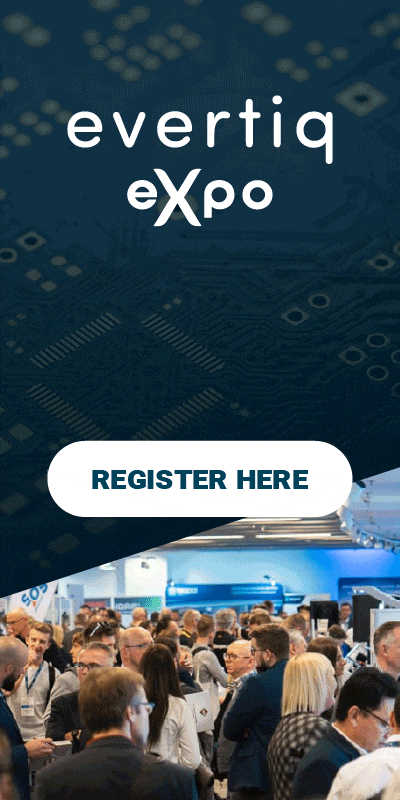Claus Aasholm: “The semiconductor cycle is broken”
During Evertiq Expo Malmö 2025, Claus Aasholm, founder of Semiconductor Business Intelligence, offered a sobering reassessment of the global semiconductor market. In his keynote and follow-up interview, Aasholm argued that the industry’s historical four-year cycle has broken down – replaced by a fragmented, profit-driven upswing felt by only a select few.
During the interview, Asholm said that for a long time WSTS (World Semiconductor Trade Statistics) numbers could guide everyone – and we’ve been used to follow these numbers.
“They show pretty much a four-year cycle — normally a quite sharp down cycle and a long up cycle,” he said, explaining that in prior cycles, we saw that all parts of the supply chain basically following this pattern.
“So you could say that the tide lifts all ships. All people needed to do was to look at the WSTS numbers and say, ‘okay, we still have a year in the upcycle left’. But this cycle is different. We are now probably two years into an upcycle, but most companies are not feeling it.”
While companies like Nvidia are seeing record profits, many others in the supply chain – such as wafer producers – remain stuck in flat or negative growth, with wafer fabs running at unexpectedly low utilisation rates. According to Aasholm, Taiwan Semiconductor Manufacturing Company (TSMC), for example, is operating at just 73% capacity despite being two years into an apparent upturn.
The main reason? This cycle is no longer demand-driven. Normally you would see component volume increases linked to for example smartphones or something like the the cloud revolution. This is not the case this time around – now, profitability is rising but volumes are not.
“If you look at Nvidia, Nvidia is getting their chips manufactured at TSMC. And we're two years into the upturn, so TSMC should be running at full capacity, but they don't. They're 73% capacity. This is ridiculous. At the same time, we're building fabs in the US and everything like it's needed. So you have this cycle is basically profit driven.”
Aasholm also highlighted the growing geopolitical and strategic divergence among regions. He pointed to Taiwan as having the most coherent national semiconductor strategy.
“You don't have anybody in the government in Taiwan who doesn't understand semiconductors. They're not politicians, they are semiconductor people first and then politicians afterwards”
He points to Taiwan’s “T-1”-policy which ensures that the most advanced nodes remain domestic, with only trailing-edge production technologies being exported.
“That means right now in the US they are producing 4 nanometers while 3 nanometers stays in Taiwan, and soon that will be 2 nanometers in Taiwan and 3 nanometers in the US. But basically they want to keep the best technology at home for that period.”
By contrast, Europe’s semiconductor ambitions remain unclear, said Aasholm. “We’re trying to create a big semicondcutor industry, but with absolutely no plans or money.” His advice to European firms: align with the dominant industries in their home markets and plug into existing ecosystems. He points to Europe’s dominant position in semiconductor tools, more specifically EUV tools – a sector led by ASML. “That’s not just a company, it’s an industry,” he noted.
When asked about early warning signs of disruptive cycles, Aasholm criticized the industry’s overreliance on legacy indicators and corporate optimism. “There’s too much candy floss,” he said, referring to overly positive investor messaging. “You need to look at the data. You need to look at the underlying data. What is going on in all areas of the supply chain.”
Looking ahead, Aasholm warned that the continued rise of AI is reshaping the entire industry.
“AI is increasing demand. But it's the only one. So you have this situation where the entire upturn is driven by one thing.”
To gauge the future, Aasholm has looked into the into the investments of the cloud companies. And what we're seeing is that they will increase their CapEx by 48% this year. He cautioned that this will further tighten supply in other segments, as memory and other components are increasingly diverted to meet hyperscaler demand.
“I'm relatively sure that this AI cycle will continue. But that also makes it even more difficult for the rest of the industry. When the data center market is now 38% of the total semiconductor, what happens when it's 58% or 68%? – which it eventually will become.”
Claus Aasholm is set to take the stage as a keynote speaker at several Evertiq Expos in 2026, bringing his insights to audiences across Europe. He will headline Evertiq Expo French Riviera on March 12, share his expertise in Krakow on May 7, and round out the spring season in Malmö on May 21.
